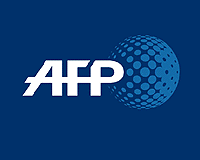
 |
The Soyuz vessel touched down near the city of Arkalyk at 0011 GMT Friday, with US astronaut Michael Foale, his Russian colleague Alexander Kalery and Andre Kuipers from the Netherlands on board.
The spacecraft's landing was greeted with cheers at the Mission Control Center in Korolyov, near Moscow, where Kuipers' parents, fiancee and two daughters and Foale's wife and son attended the event.
NASA administrator Sean O'Keefe, Russian Federal Space Agency director Anatoly Perminov and European Space Agency (ESA) general director Jean-Jacques Dordain were also present at the Control Center.
The Soyuz spacecraft had undocked from the ISS just over three hours earlier at 2052 GMT Thursday bringing back Foale and Kalery who had been aboard the ISS since October, as well as Kuipers who had just been in orbit since April 19.
Foale and Kalery carried out 42 scientific experiments while aboard the ISS, Perminov said. Kuipers carried out 21 experiments, 19 of which were successful, said the director of the ESA's manned flights program, Joerg Feustel Bueechel.
The Soyuz landing was broadcast live from Kazakhstan on giant screens at the control center outside Moscow. Foal, Kalery and Kuipers, smiling but a little pale and weakened by the lack of gravity they experienced on the ISS, were helped out of the spacecraft by Russian space rescue service staff.
They then sat in armchairs looking out at the Kazakh steppes and sipped drinks before being helped into waiting helicopters.
"Everybody smells very good," joked Foale, who had spent six months in space with Kalery.
The three astronauts arrived a few hours later by plane at Chkalovsky airport near Moscow from where they travelled to the Star City cosmonaut training center for several days of rest and rehabilitation.
"We are very happy (although) of course we were worried, because anything could have happened," said Kuipers' mother Maria.
A top official with Russia's manned space flights program played down the significance of a small helium leak that had been discovered on the Soyuz spacecraft on Wednesday, before it left the ISS.
"We discovered an insignificant leak but we knew it would have no consequences on the landing (although) to be on the safe side, we carried out certain operations in order to preserve (the necessary) volumes" of helium aboard Soyuz, Vladimir Solovyov said.
Space officials had also been anxious to avoid a repeat of the botched landing last May when the landing capsule landed nearly 500 kilometersmiles) off-target, forcing rescuers to search for the astronauts for several hours.
Since the Columbia shuttle disaster last year, Russia's Soyuz rockets have been the only way to send astronauts and equipment to and from the ISS, a 16-nation project.
The Soyuz mission was the third to the ISS since the United States froze shuttle missions after Columbia disintegrated upon re-entry in February 2003. US shuttle flights are due to resume next April.
With Russia receiving no extra funding for providing transport to the ISS, NASA and the cash-strapped Russian space agency have been in conflict over Russian demands to extend the usual missions to one year.
This would free up more seats on the six-monthly Soyuz "taxi" missions which Russia wants to sell to space tourists and ESA astronauts.
SPACE.WIRE |